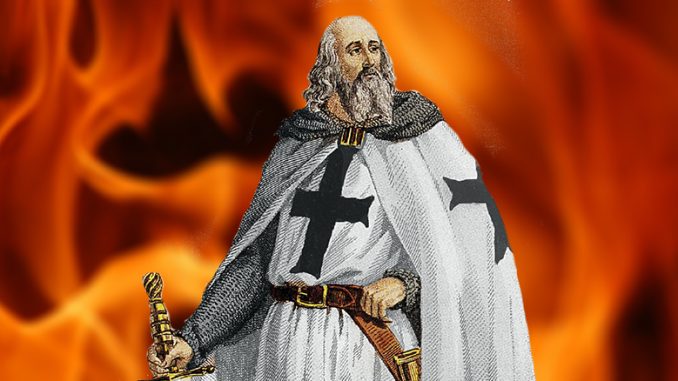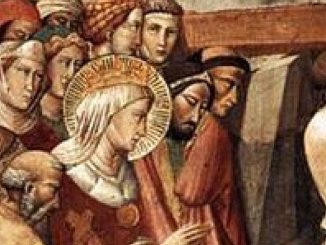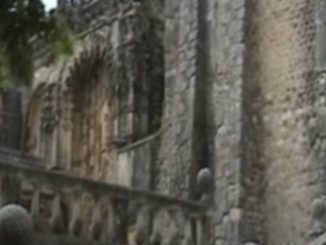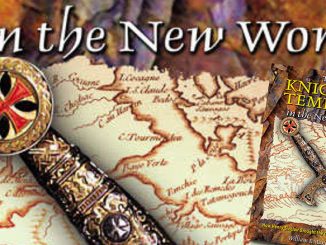
Many accusations were leveled against the Knights Templar during the trials that the Order worshiped a Bearded Head of the Templars. The question remains as to what this head was and what was its significance if any to the order?
As with any mystery the answers are few while the speculations are many. Below are several theories that have been presented over the years regarding the head of the Templars. This head has often been referred to as Baphomet. In his book, “Supremely Abominable Crimes,” author Edman Burman presents the following information:
“A head with one face or two faces, sometimes bearded and sometimes not, made of silver or of wood, a picture of a man or of a woman, an embalmed head that glowed in the dark or a demon.”
Edman Burman – Supremely Abominable Crimes
As varied as the description of this head may be, the most frequent seems to be that of a bearded head. Below is a listing of some of the theories of the alleged Templar Bearded Head:
Bearded Head of the Templars – The Baphomet
Although mentioned but a few times in the Templar trials, the concept of Baphomet has become attached at the hip to the Templar mythos. While much has been written regarding this mythos on other parts of the web site. A brief examination of the theory is relevant to the allegations of Head worship by the Templars.
King Philip IV, who lusted for the Templar wealth, could only take it from them if they were heretics. The charges of demon worship, kissing genitals and such were common accusations of heresy that lasted from the destruction of the Cathars at Albi through to the Salem witch-hunts of the American Colonies.
It is quite probable that Baphomet was either a corruption of the Islamic prophet Mohammed which would synch a conviction of Heresy by the trial or a Hebrew code for the Goddess Sophia “Wisdom.” In either case little hard evidence survives to prove or disprove either claim.
The trials say little of the actual head, but there are some textual accounts of it. Guillaume de Arbley who was the preceptor of the Templar house at Soissy in the diocese of Meaux testified on October 22nd, 1307 that he had seen the Bearded head twice, which he claimed was gilded and made of silver and wood. Three years later on November 10th, 1310 he claimed that the gilded head placed on Templar altars was a representation of the 11,000 virgins. There is an old tale of a group of Cornish noblewomen who were attacked and killed by a group of Huns on route to Rome. Still this account does not support the Baphomet theory and therefore casts doubts on a Baphomet, if indeed such an idol existed being the head allegedly venerated by the Templars.
In some instances the Baphomet is also described as having two heads and four legs. This could be a description of the image made by the open Shroud of Turin, which we look at below.
Bearded Head of the Templars – The Shroud
The Templars are said to have possessed the Shroud of Turin. The shroud which when open measures approximately 12 feet by 4 1/2 feet, was commonly folded four times revealing an image of a head, that image believed to be the head of Christ. In 1204, the Templars were involved with the sack of Constantinople and it is here that they are said to have obtained the relic. Carbon dating shows that the Shroud is from around 1280. However many recent studies have shown that Carbon Dating is not as reliable as once thought.
If the Shroud is the true shroud of Christ then this claim that the shroud is the object of Templar idolization could be a valid theory, however a contradictory theory is that the Shroud is actually the image of Jacques de Molay. If this is the case as many are beginning to believe, then the Templars certainly did not worship the shroud, since it came to exist after the silencing of the order in its medieval form.
Bearded Head of the Templars – Jacques De Molay
It would seem immediately that any discussion of the worshipped head of the Templars being the head of Jacques de Molay could be immediately discredited as de Molay was the last Grand Master of the order having been burned at the stake in 1314, seven years after the orders arrest. It is also rumored that the head was that of Hugues de Payens, the first Grand Master of the order.
Bearded Head of the Templars – Caput Mortum
Caput Mortum is the alchemy symbol known in English as the dead head. While it is quite likely that the Templar knights came into some contact with alchemy during their time in the East. Insofar as the Templars worshipping a singular alchemy symbol, the theory is quite unlikely.
Bearded Head of the Templars – John the Baptist
Saint John the Baptist, who was beheaded, is said also to be the source of Templar idolatry. As ludicrous as this may at first seem, it is commonly known that several bogus John the Baptist heads were around during this time. Could the Templars have possessed one of these heads? It is possible, as the Templars were said to possess many of the religious relics of the time. As supposed Poor Knights of Christ it is quite possible that the head of St. John the Baptist would be an object of devotion and guidance since his feast was to be celebrated by the command of the Templar Rule of Order.
Bearded Head of the Templars – The Head of Jesus Christ
In his book, “The Head of God,” Dr. Keith Laidler put forth the theory that the Templars were practitioners of a cult of the head, which dated back to ancient times. Laidler’s theory claims that Jesus Christ’s head was severed after His crucifixion and latterly fell into the hands of the Templars who venerated it as part of their cult. This head, Laidler claims is buried in the apprentice Pillar at Rosslyn Chapel in Scotland.
About Us
We hope you enjoyed this article on the Bearded Head of the Templars.
TemplarHistory.com was started in the fall of 1997 by Stephen Dafoe, a Canadian author who has written several books on the Templars and related subjects.
Read more like the Bearded Head of the Templars from our Templar Mysteries Archives – Templar History



